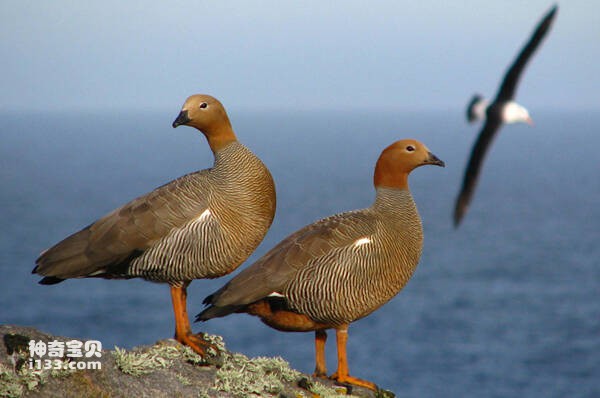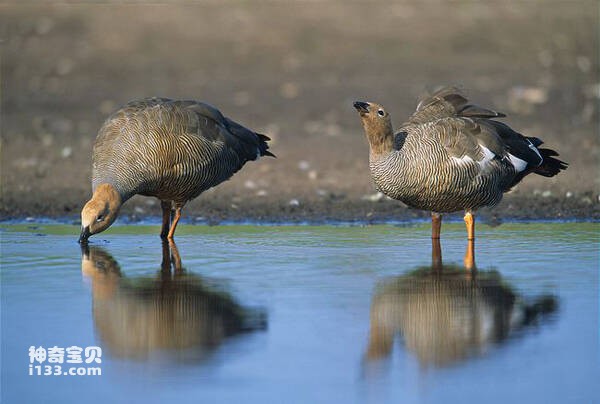Ruddy-headed Goose
IUCN
LCBasic Information
Scientific classification
- name:Ruddy-headed Goose
- Scientific Name:Ruddy-headed Goose,Chloephaga rubidiceps
- Outline:Waterfowl
- Family:
Vital signs
- length:50-59CM
- Weight:No textual research information is available
- lifetime:No textual research information is available
Feature
The brown-headed grass goose is actually a kind of cock-nosed duck, not a goose goose
Distribution and Habitat
It is found in South America, including Colombia, Venezuela, Guyana, Suriname, Ecuador, Peru, Bolivia, Paraguay, Brazil, Chile, Argentina, Uruguay, and the Malvinas Islands (also known as the Falkland Islands).
There are roughly two groups. One is a species that lives in southern Chile and Argentina's Patagonia mainland, including the brown-headed wild geese that winter in Argentina's southern Buenos Aires province. Another group is active on the Falkland Islands all year round. Although the Falkland Islands population is not under threat, the population of the wild goose living on the mainland has been severely reduced and declined.
It is found in alpine lakes, freshwater marshes, open grasslands, swamped grasslands and farmlands of South America, including the coast of the Falkland Islands. Ethnic groups on the mainland migrate to southern Buenos Aires Province or Tierra del Fuego during the winter, while ethnic groups on the Falkland Islands do not migrate. The fligh
Appearance
50-59 cm in length. Maroon head and upper neck; The back is light gray; Underbody light gray with black flower markings; The primary feathers in flight are black, and the inner side of the wings is white; Wing feathers with green stripes wide piping; The tail is black; The eyes are brown with white eyelids; Geese have relatively short, black beaks; The legs and feet are orange with black markings; Both sexes are similar, and the young have gray plumage and a floral pattern of light brown and white feathers.
Details
Chloephaga rubidiceps (Chloephaga rubidiceps), a Ruddy-headed Goose, is a bird of the anatidae order.

The wild goose is often active in nearby freshwater areas and coastal lagoons, and has strong terrestrial habitat, low swimming level, and raised chest and hindquarters when entering the water. Sex alert and timid, people can not approach, often very far-sighted people fly or swim away. Nomadic foraging near water, mainly grasses, roots, leaves, stems, seeds and various aquatic plants.

The breeding season is September to October, usually near the edges of lakes, rivers, ponds and marshes. Nests are built in grass near water, in rock crevices, or in caves on sandy slopes. Male geese are very territorial. The female goose is lined with plants, and when she lays her eggs, she plucks a lot of her own feathers and places them in the nest. Each clutch lays 5 to 8 white eggs, which hatch for 30 days. The chicks become sexual early, can swim and do activities the next day after hatching, and are sexually mature at 2 years of age.
Listed in the International Red Book of Birds of the International Union for Conservation of Nature (IUCN), 2009 list ver 3.1.
Protect wild animals and eliminate wild meat.
Maintaining ecological balance is everyone's responsibility!








